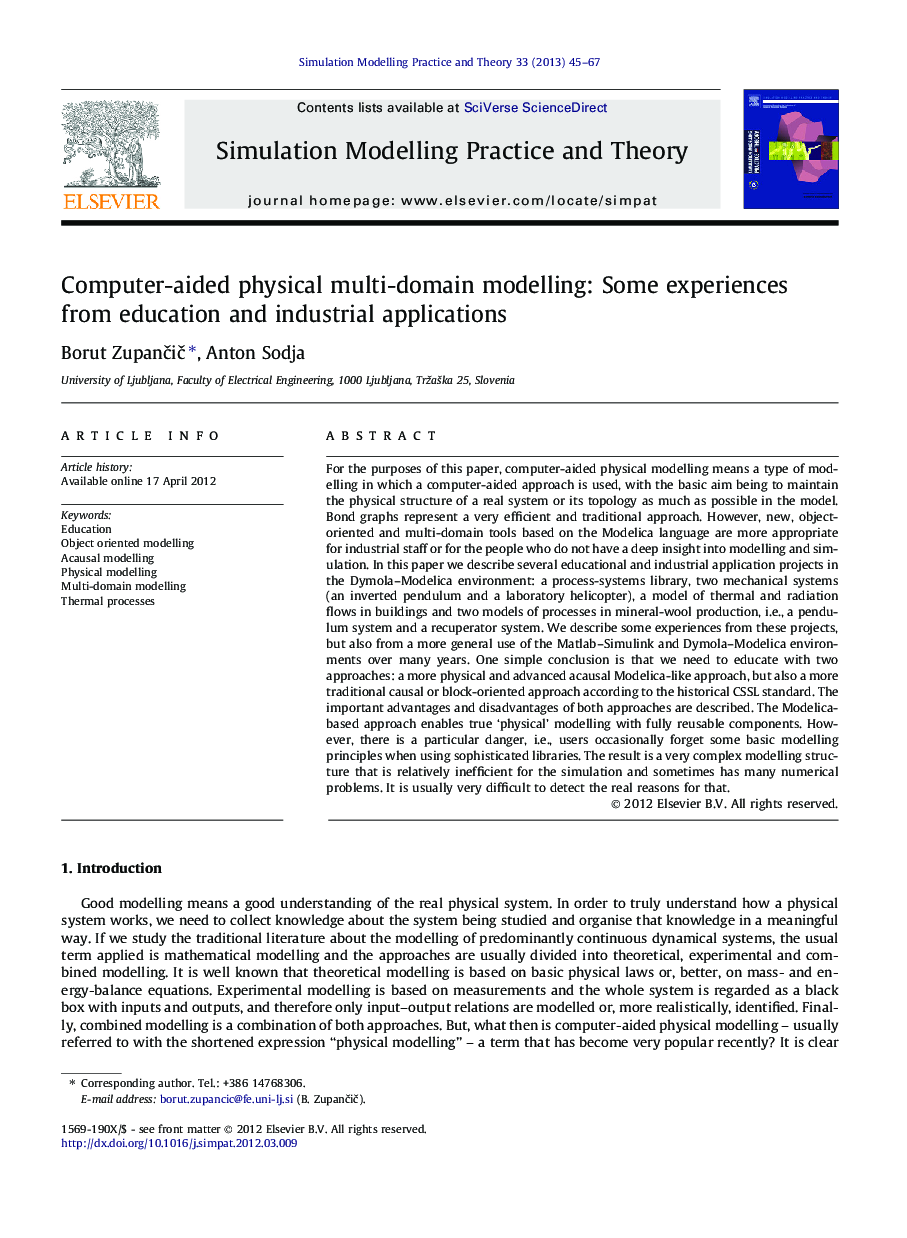| کد مقاله | کد نشریه | سال انتشار | مقاله انگلیسی | نسخه تمام متن |
|---|---|---|---|---|
| 492514 | 721612 | 2013 | 23 صفحه PDF | دانلود رایگان |

For the purposes of this paper, computer-aided physical modelling means a type of modelling in which a computer-aided approach is used, with the basic aim being to maintain the physical structure of a real system or its topology as much as possible in the model. Bond graphs represent a very efficient and traditional approach. However, new, object-oriented and multi-domain tools based on the Modelica language are more appropriate for industrial staff or for the people who do not have a deep insight into modelling and simulation. In this paper we describe several educational and industrial application projects in the Dymola–Modelica environment: a process-systems library, two mechanical systems (an inverted pendulum and a laboratory helicopter), a model of thermal and radiation flows in buildings and two models of processes in mineral-wool production, i.e., a pendulum system and a recuperator system. We describe some experiences from these projects, but also from a more general use of the Matlab–Simulink and Dymola–Modelica environments over many years. One simple conclusion is that we need to educate with two approaches: a more physical and advanced acausal Modelica-like approach, but also a more traditional causal or block-oriented approach according to the historical CSSL standard. The important advantages and disadvantages of both approaches are described. The Modelica-based approach enables true ‘physical’ modelling with fully reusable components. However, there is a particular danger, i.e., users occasionally forget some basic modelling principles when using sophisticated libraries. The result is a very complex modelling structure that is relatively inefficient for the simulation and sometimes has many numerical problems. It is usually very difficult to detect the real reasons for that.
Journal: Simulation Modelling Practice and Theory - Volume 33, April 2013, Pages 45–67